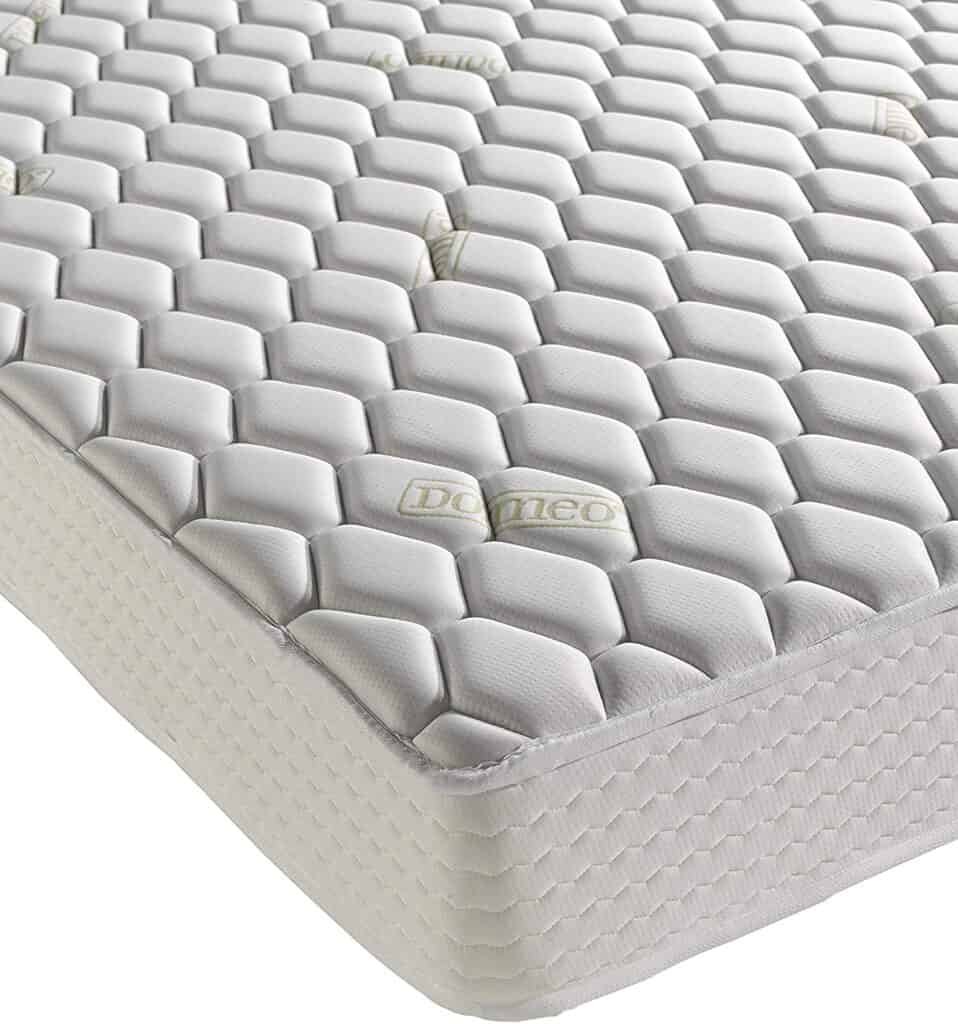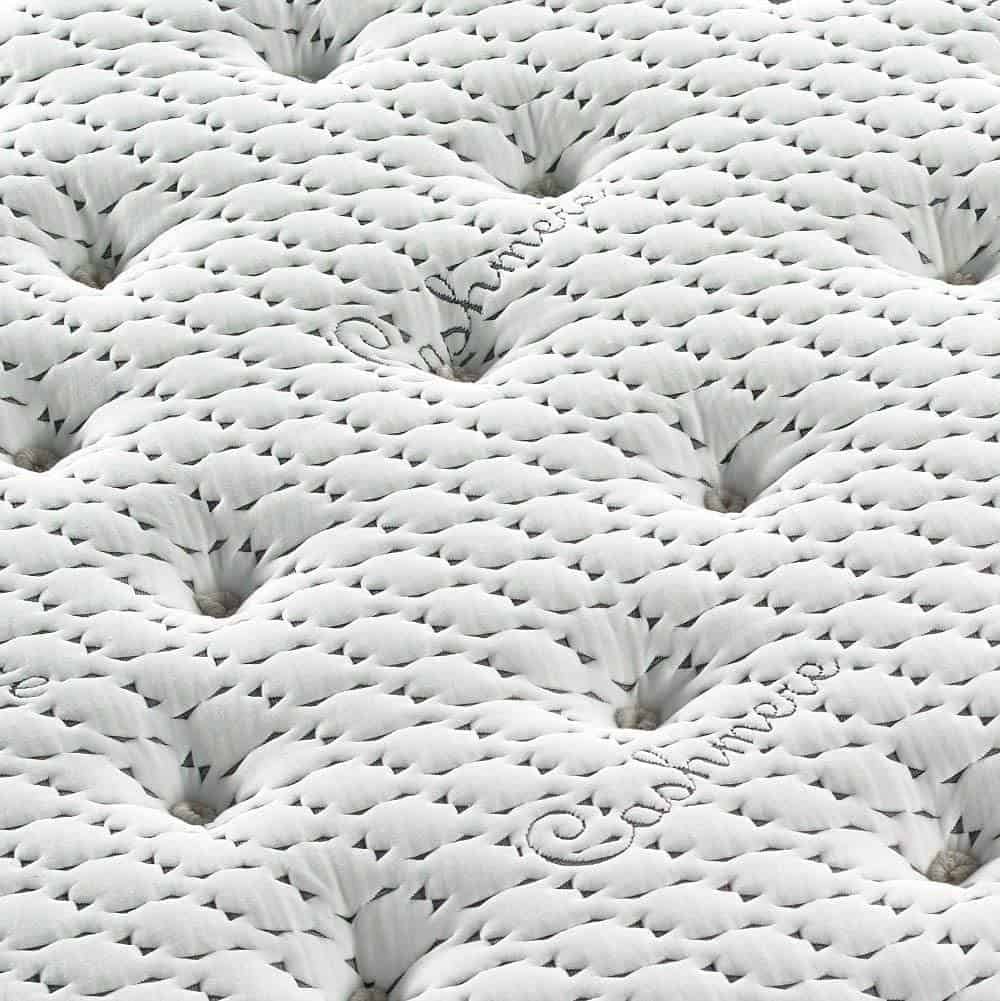Why do mattresses sink in the middle?
We’ve all been there. You’re lying in bed, trying to get comfortable, and slowly but surely, the middle of the mattress starts to sink in. You sink until you’re practically lying on the springs, creating a nearly impossible indent to escape. So why does this happen? And more importantly, what can be done to prevent it? Keep reading to find out!
The mattress needs to be flipped over
People often feel like their mattress is sinking in the middle. What’s happening is that the mattress is compressed down more where you are sleeping because your body weight flattens out the springs. The solution to this problem is to flip (or rotate) your mattress every few months. This means taking your mattress off its box spring and flipping it over so that the top half becomes the bottom half or just rotating it 180 degrees to orient it in a new direction on the box spring. This helps extend the life of your mattress, balance out wear, and prevent any one side from getting too soft or saggy. It also redistributes dust, dead skin cells, and other debris that collects on top of a mattress throughout its lifetime.
The springs could be wearing down
Most mattresses have an interlocked coil spring system, which can wear down over time. Springs are meant to provide support and give the bed its shape, but they can get bent out of the body when you sleep on them every night, pushing them out of alignment and making them lose their tension. As a result, the mattress sags in the middle and causes back pain, referred to as “back sag.” Even if you’re not feeling any discomfort, it’s worth checking whether your mattress is still providing all-over support (or if it just feels like your bed has turned into a hammock).
Springs can also lose their tension if constantly compressed in the same spot. This usually happens when people sit on the edge of the bed to put on their shoes or sit in the same place on the bed to watch TV. While this might not seem like a big deal, it can cause the springs to loosen over time and contribute to that sinking feeling in the middle of the bed.

You might be sleeping in the same spot every night
You might be guilty of the same old sleeping position, night after night. While there’s nothing wrong with this, if it works for you, you may have noticed that your bed is beginning to sag in the middle where you sleep.
In other words, yes—there’s a chance your sleeping habits are causing your mattress to sag!
This is because the body produces heat and moisture that can affect a mattress. Over time (and especially if you sleep in the same spot every night), this can cause a mattress to sag or develop an indentation; after all, memory foam mattresses are designed to conform around and respond to your body’s weight and shape.
Your weight could be unevenly distributed
To avoid the problem of your weight is unevenly distributed (which can cause a mattress to sag prematurely), try to sleep in positions that evenly distribute your weight. Avoid sleeping on your stomach, as this position puts most of your body’s weight on a small mattress. Try sleeping on your back or side—this way, you’re less likely to sleep in one position for too long. Another mistake people make is sleeping right at the edge of their bed. While you may not think it causes problems, that area is the first to wear out and become uneven. Finally, don’t use more pillows than you need—extra pillows can put pressure on one part of the bed while leaving another unattended.
The mattress might be too soft for your body type
Your body type and how you sleep can also make a difference in how quickly your mattress sinks. If your mattress is too soft, it will create sinkage points in the places where your body comes into contact with the bed. For example, if you are a side sleeper on a soft mattress, the part of your body that touches the bed—your shoulders and hips—will sink at these points. If this happens to you, there may be nothing wrong with your mattress—you might need a firmer one.
On the other hand, if you have a firm mattress, there may be no sinkage. But if you do have a firm mattress and still notice sinkage, it could be due to an issue with the construction of the mattress.
The bed frame might be uneven
It may be that your bed frame doesn’t have enough support. If you use a traditional wood frame, see if it has a centre support beam running from the headboard to the footboard. If it does not, this could be why the bed is sinking. If your bed has a centre support beam, you might need to replace the frame altogether, as it can no longer accommodate the weight of the mattress.
You might be sleeping on an old mattress
If you’ve ever purchased a new mattress, you’ve likely seen the manufacturer’s suggested lifespan printed on its label. Similar to cars and electronics, mattresses are designed with a specific lifespan. If your mattress is within that range but still sinking in the middle, it may be too soft for your body type, or the springs may be worn down or unevenly distributed. While the latter is true for some mattresses, most beds begin to sag over time because of age.
If this happens, try rotating your bed so that you’re sleeping on a fresh surface (make sure to check if the mattress requires flipping too). For example, if you have a queen-sized bed and typically sleep on one side near the headboard, try moving to the foot of the bed or across from your usual spot. As a bonus, changing things up can often help with pain reduction and muscle strain.
The mattress might be sagging due to a fault
If you’ve ruled out all of the above and your mattress is still sinking in the middle, there might be an issue with its structure. Innerspring mattresses have coils that can break down over time, causing the mattress to sag. If so, you’ll likely need to replace the mattress.
Memory foam mattresses can also sag in the middle, usually due to a manufacturing defect or an issue with the foundation. If you have a memory foam mattress, make sure it’s on a solid foundation—a memory foam mattress on a springy box spring will sag over time.
You might be using too many pillows
If you frequently use multiple pillows while you sleep, you might put too much pressure on one part of the mattress while leaving another unattended. This can cause the mattress to sag in the areas where you typically sleep. To avoid this, try using just one pillow or no pillows. This will help distribute your weight more evenly and prevent the mattress from sagging.
Final Thoughts
A saggy mattress is often the result of poor support, an old mattress, or too much pressure in one area. If your mattress is sagging, try rotating it or using a different foundation. If the problem persists, you may need to replace the mattress. The problem with a mattress sinking in the middle is that it can cause back pain, muscle strain, and even sleeping difficulties. The problem won’t fix itself and will only worsen over time. It’s best to address the issue as soon as possible to avoid any further discomfort.



